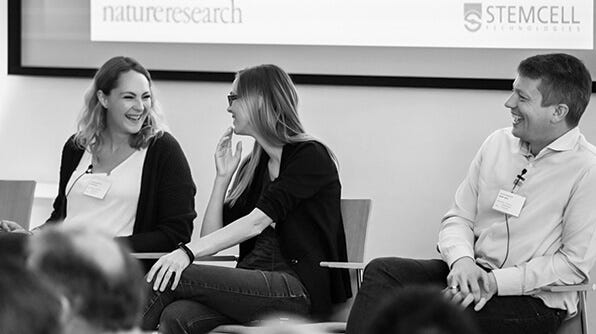Neural Organoids
Neural organoids, also known as cerebral organoids, are hPSC-derived three-dimensional in vitro culture systems that recapitulate the developmental processes and organization of the developing human brain. These ‘mini-brains’ provide a physiologically relevant in vitro 3D brain model for the study of neurological development and disease processes that are unique to the human nervous system. They have important applications in studying human brain development and neurological disorders such as autism, schizophrenia or brain defects caused by Zika virus infection.
We've created these resources to support your work with cerebral organoids, and to give you a glimpse into how cerebral organoids are being used by scientists in the field of neuroscience.
Organoids: Experts Talk Standardization at Nature Research Round Table
Global organoid experts gathered in London, UK to discuss the current state of the technology, protocol standardization, translation into patient care, nomenclature, and understanding what questions a given organoid culture can and can't answer.
Read Now >Key Neural Organoid Publications
Neural Spheroids
Forebrain-Specific Organoids
Birey F et al. (2017) Nature 545(7652): 54–9.
Kadoshima T et al. (2013) Proc Natl Acad Sci U S A 110(50): 20284–9.
Eiraku M et al. (2008) Cell Stem Cell 3(5): 519–32.
Pituitary-Specific Organoids
Hypothalamus-Specific Organoids
Cerebellum-Specific Organoids
Muguruma K et al. (2015) Cell Rep 10(4): 537–50.
Muguruma K et al. (2010) Nat Neurosci 13(10): 1171–80.
Midbrain-Specific Organoids
Retinal Spheroids
Eiraku M et al. (2008) Cell Stem Cell 3(5): 519–32.
Whole-Brain Organoids
Lancaster MA et al. (2014) Science 345(6194): 1247125.
Lancaster MA et al. (2013) Nature 501(1): 373–9.
Zika Virus
Gabriel E et al. (2017) Cell Stem Cell 20(3): 397-406.
Cugola FR et al. (2016) Nature 534(7606): 267–71.
Dang J et al. (2016) Cell Stem Cell 19(2): 258–65.
Garcez PP et al. (2016) Science 352(6287): 816–8.
Qian X et al. (2016) Cell 165(5): 1238–54.
Lancaster MA et al. (2013) Nature 501(1): 373–9.
Autism
Other
Quadrato G et al. (2017) Nature 545(7652): 48-53.


